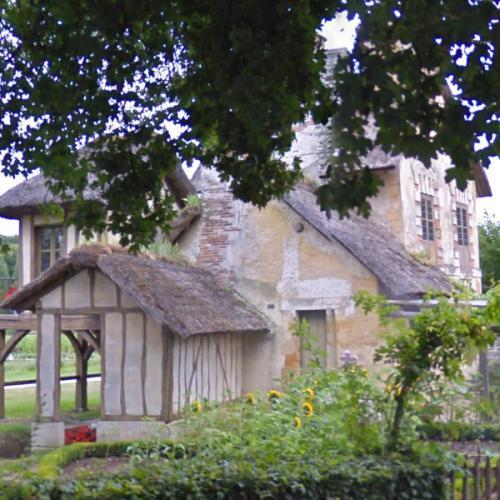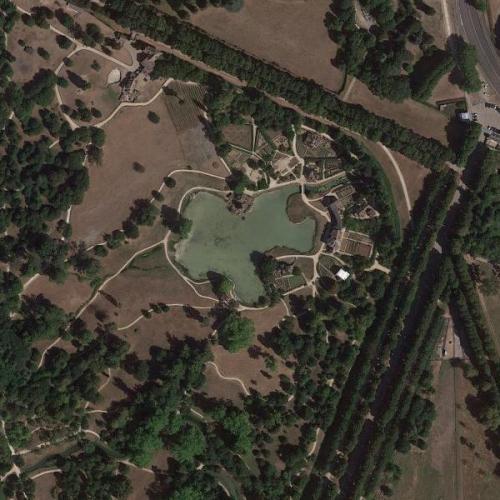Marie Antoinette, one of the most famous queens in history, was the wife of the ill-fated Louis XVI of France. During her husband’s reign, the country devolved into the French Revolution, which led to the beheading of the King, and then the Queen, on October 16, 1793.
Birthplace, Hofburg Palace, Vienna, Austria
Born Maria Antonia at Hofburg Palace in Vienna, Austria on November 2, 1755, Marie Antoinette was the last girl and second to last child born to Empress Maria Theresa of Austria.
The Hofburg Palace was the imperial palace for the Hapsburg Empire, which ruled Austria, Hungary, parts of Germany, and eastern Europe. It is now the official residence and office for the President of Austria. Construction of the palace began in the 1200s and has continued to this day, with additions, enhancements, and upgrades taking place on a regular basis.
Portions of the building are open to the public for tours.
Childhood Retreat, Hetzendorf Castle, Vienna, Austria
Maria Antonia and her siblings spent much of their time at the Hetzendorf Castle, which was a hunting “lodge” in the 1700s outside the capital city. As Vienna grew, it engulfed the former rural land, and the castle is now part of a neighborhood in Vienna.
The castle was enlarged by Maria Theresa, and her children spent time there both in their youth and as adults, when they sometimes were without homes or royal residences.
Versailles, Paris, France
When she was 14, Maria Antonia was betrothed to Louis XVI, the future King of France. Upon her marriage on May 16, 1770, at Versailles, her name changed to Marie Antoinette, and she became known as the future Queen of France.
The couple, along with the entire royal court, lived at or spent much of their time at Versailles, the ornate, elaborate, even excessive palace located just outside Paris, the capital city.
Versailles is one of the most famous palaces in the world, with good reason. It has the famous Hall of Mirrors, with more than 350 mirrors, and was so luxurious that even the chamber pots were made of silver and gold.
Bedchamber at Versailles
Among the 2,300 rooms at Versailles is the queen’s bedchamber, an ornate and beautiful room covered with tapestries and gold leaf. However, the room is also full of history, and sadness.
During the time of royalty, it was required that the queen, and any woman of the royal blood, give birth in public. This was to ensure that the child was indeed of royal blood and fit to rule. After eight years of marriage, when Marie Antoinette finally went into labor, being present at the birth was the most important event of the year.
Hamlet at Versailles
Marie created a small retreat on the grounds of Versailles called the Queen’s Hamlet, a small but complete working farm. Here, she often retreated from the formalities of palace life, held small gatherings, and spent time with her children.
Many accused the queen of playing at farm life. Along with the supposed remark to starving people “Let them eat cake,” rumors about the Hamlet fueled her reputation as being out of touch with the people of France.
The Hamlet fell into disrepair after the Revolution, but Napoleon restored portions of the estate, and others helped restore it to its original design in the 20th century.
Tuileries Palace, Paris, France
The Tuileries Palace was built in the 1500s as the imperial palace and was the official home of French royalty for three hundred years. Even when the Court was moved to Versailles, the palace in Paris was still an official residence.
Louis VXI and Marie Antoinette, in the heat of the Revolution, were forced to move to the Tuileries, to be watched by Revolutionary leaders. From there, the family tried to escape, but were caught and brought back, facing further punishment.
In 1871, the Tuileries were burned down, and only the Louvre was saved. The gardens and gathering areas still exist, and are some of the most-visited places in Paris.
Prison in La Conciergerie, Paris, France
In 1793, the royal family was moved to the La Conciergerie, which was originally a palace, but turned into a prison. Many prisoners of the Revolution were held here before being taken to their execution by guillotine.
Marie was held here for months, with absolutely no privacy or any of the amenities she was used to as a royal. She was tried for various crimes and found guilty.
It was from here that she was escorted to her execution at what is now the Place de la Concorde. On October 16, 1793, the 37 year old former queen of France was forced to ride in an open wagon to her execution. Along the way she was jeered and mocked, but she remained composed until the very end. She was beheaded just after noon.
After her execution, she was placed in an unmarked grave.
Tombs at Basilica of San Denis, France
After years of revolution, dictatorship, and chaos, the monarchy was restored. The bodies of Louis XVI and Marie Antoinette were exhumed and buried alongside other kings and queens of France in the Basilica of San Denis.
This cathedral has long been important to royal France, being where queens are crowned, and royalty have been buried for a thousand years.
While she lived only 37 years, the beautiful, shy, and fun-loving Marie has become one of the most famous, and imitated, queens of all time. Her royal status belied the struggles of her life: leaving her family as a ten to marry a stranger, giving public birth to an heir, and falling from grace and fortune to nothing.








